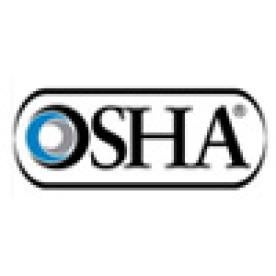On March 25, 2016, the Occupational Safety and Health Administration (“OSHA”) released new standards for workplace exposure to silica dust, providing the first revisions to these standards since 1971. This final rule addresses workplace exposure to respirable crystalline silica (“silica”) which is a mineral that is commonly found in everyday materials such as roads, buildings, and sidewalks, as it is a common component of sand, stone, rock, concrete, brick, block, and mortar. Operations such as glass manufacturing, foundries, sand blasting, and hydraulic fracturing have been determined to lead to silica exposure as these operations require the performance of tasks such as cutting, sawing, drilling, and crushing, which creates dust containing this material. OSHA has identified silica as an occupational risk because it has been found to cause silicosis, lung cancer, chronic obstructive pulmonary disease, and kidney disease.
OSHA’s final rule establishes two standards: (1) a general industry and maritime standard; and (2) a construction standard. The requirements for hydraulic fracturing operations will fall under the general industry and maritime standard, which will require employers to ensure that its employees are not exposed to an airborne concentration of silica in excess of 50 micrograms per cubic meter of air (“µg/m3”), averaged over an eight hour shift. This new permissible exposure limit is half of the previous limit contained in the 1971 silica standards. Aside from lowering the permissible exposure limit, the final rule also places considerable obligations on employers. Employers are required to:
-
Conduct employee exposure assessments;
-
Establish regulated areas;
-
Implement engineering and work practices to reduce and maintain employee exposure to at or below the permissible exposure limit;
-
Provide appropriate respiratory protection for those employees who work in a regulated area or who will be exposed to silica concentrations in excess of the permissible exposure limit;
-
Make medical surveillance available to those employees exposed to silica; and
-
Maintain accurate records of all exposure measurements taken to assess an employee’s exposure to silica.
In regards to hydraulic fracturing operations, the primary source for silica exposure at these sites results from the dust produced from the use of sand as a proppant. OSHA has identified the following seven sources that release dust containing silica at a hydraulic fracturing site:
-
Thief hatches;
-
Sand movers;
-
Vehicle traffic;
-
Transfer belts;
-
Bender hoppers;
-
Sand drops; and
-
Sand transfer belt (Dragon’s tail).
Under the final rule, employers would need to implement engineering and work practices, such as capping unused fill ports on the sides of sand movers, in order to reduce employee exposure to silica to at or below the permissible exposure limit.
OSHA’s final rule has established explicit deadlines for hydraulic fracturing operations:
-
All obligations, except obligations for medical surveillance and engineering controls, commence June 23, 2018;
-
Obligations for engineering controls commence June 23, 2021;
-
Obligations for medical surveillance commence June 23, 2018, for those employees who will be occupationally exposed to silica above the permissible exposure limit (50 µg/m3) for 30 or more days per year;
-
Obligations for medical surveillance will commence June 23, 2020, for those employees who will be occupationally exposed to silica at or above the action level (25 µg/m3) for 30 or more days per year.
While OSHA has released this rule as final, legal challenges are underway in the United States Courts of Appeals for the Fifth and Eleventh Circuits. The challenges thus far have been brought primarily by construction groups who have alleged that the proposed permissible exposure limit is “technologically and economically infeasible.”
If this rule survives these challenges it will be interesting to see its overall impact to hydraulic fracturing operations.




 i
i

